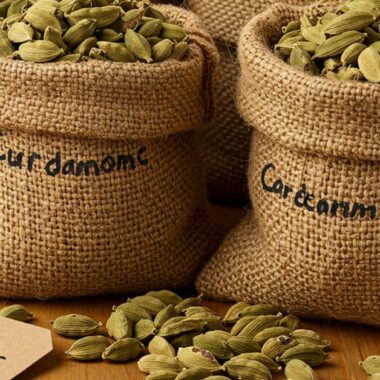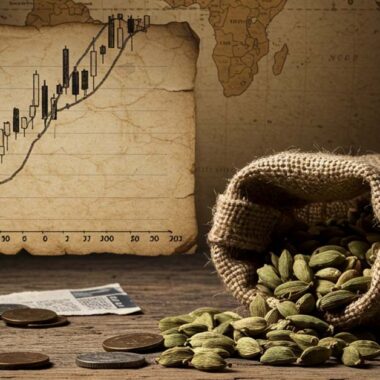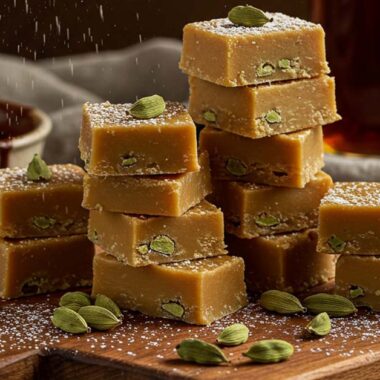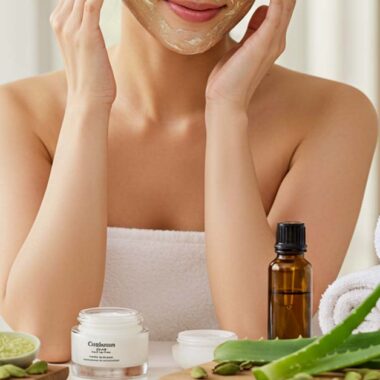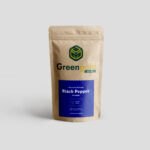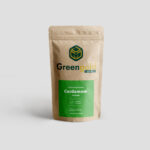In medieval Europe, cardamom was more than just a spice—it was a symbol of status, luxury, and wealth. As one of the most expensive and sought-after spices, it was reserved for royalty, nobility, and the wealthiest merchants. Imported from India and the Middle East through Venetian and Arab traders, cardamom became a staple in the lavish feasts, perfumes, and medicines of European elites.
Let’s explore how cardamom became a powerful status symbol in medieval Europe! 🏰✨
🌍 The Spice Trade & Cardamom’s Arrival in Europe
During the Middle Ages (5th-15th century), cardamom reached Europe through complex and expensive trade routes:
✔️ Arab Traders controlled the flow of exotic spices from India and Sri Lanka.
✔️ Venetian Merchants were the primary spice dealers in Europe, making Venice a hub for the spice trade.
✔️ Portuguese Explorers (15th century) later established direct routes to India, but before that, cardamom remained an elite commodity.
💡 Did you know? Spices like cardamom were so valuable that they were often used as currency in medieval trade!
🏰 Cardamom in the Lives of European Nobility
Since cardamom was rare and expensive, it became a status symbol for kings, queens, and high-ranking officials. Here’s how medieval European elites used it:
1. A Staple in Royal Feasts 🍽️
European nobility used cardamom in lavish banquets to showcase their wealth and refined taste.
✔️ Spiced Meat Dishes – Used in roasted game, pies, and stews.
✔️ Medieval Sweet Breads & Cakes – Added to honey cakes, marzipan, and gingerbread.
✔️ Luxury Wines & Liqueurs – Infused in mulled wines and herbal tonics.
💡 Only the wealthiest lords could afford cardamom-infused delicacies, making it a true status symbol at the dining table!
2. The Spice of Aristocratic Medicine 🌿
Medieval physicians, influenced by Greek and Arabic medical texts, prescribed cardamom for:
✔️ Digestion & Stomach Ailments – Nobles took it after heavy meals.
✔️ Aphrodisiac Properties – Thought to enhance vitality and romance.
✔️ Plague Prevention – Some believed it warded off illnesses.
💡 Since only the rich could afford cardamom, its medical use became a sign of wealth!
3. A Luxury Gift Among Royalty 🎁
✔️ Kings & Emperors gifted cardamom to other rulers as a sign of power.
✔️ European nobility exchanged it during festive seasons as a rare and exotic treasure.
✔️ Merchants used cardamom as dowry payments in aristocratic marriages.
💡 In medieval England, cardamom was so valuable that it was stored in locked spice cabinets!
4. Cardamom in Medieval Perfumery & Fashion 👗
✔️ Cardamom-infused perfumes were exclusive to the noble class.
✔️ Medieval monks & scholars burned cardamom incense in monasteries for spiritual cleansing.
✔️ Elites carried sachets of cardamom pods to enhance their fragrance.
💡 Queen Elizabeth I was known to enjoy cardamom-scented sweets and perfumes!
⚔️ The Decline of Cardamom’s Exclusivity in Europe
By the 15th and 16th centuries, the Age of Exploration led to direct trade with India, making cardamom more accessible.
✔️ Portugal and Spain established trade routes, reducing reliance on Arab and Venetian merchants.
✔️ Dutch and British traders brought more cardamom to Europe, lowering its price.
✔️ By the 18th century, cardamom was no longer just for nobility but also available to wealthy merchants and commoners.
💡 What was once a spice of kings became a household ingredient across Europe!
🌿 Experience the Royal Elegance of Cardamom Today!
Though it’s no longer exclusive to aristocrats, cardamom still carries an air of luxury and refinement. You can enjoy the same spice once treasured by medieval European royalty with premium-quality cardamom from Greengold Guide!
👑 Indulge in the taste of history and elevate your cuisine with the spice of medieval nobility! 🍽️✨

